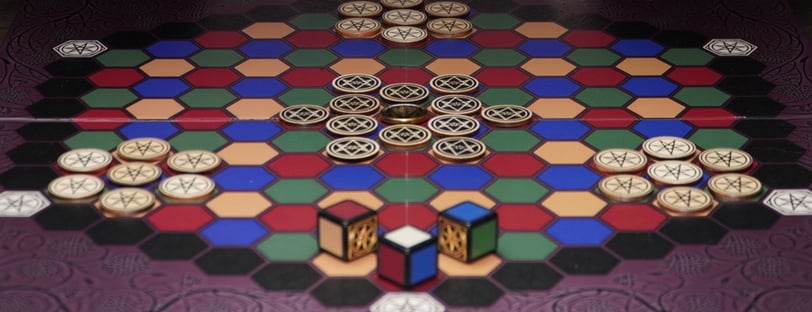Design Process and Gameplay Experiences
Niall Roper
10/17/2024


Of course, the heart of every good game is its mechanic. These goals, obstacles, and rules of behaviour within the world of a game are the primary source of pleasure, which is why abstract games like Backgammon, Go, and Chess have endured for centuries. The designing of our games begins at this abstract level to ensure that the play is engaging throughout, no matter how plain the board or the pieces are.
As much as I respect and enjoy purely abstract games such as Kala, Othello/Reversi, and Abalone, I prefer games that, in addition to engaging my desire to problem-solve and win, also take me on an imaginative journey. While getting a game's mechanics working, I always imagine how its core processes relate to different story narratives and which ones would imbue the play with the most exciting significance.
After choosing the story that best fits a game's goals and actions, I research variations on the story, its origins, and different representations over time. I'm particularly interested in imagery and symbols that relate to the story and its contexts to inform the look of the game board and its pieces. Like most artists, when interpreting the work of others, I make changes to the source material that make it more appealing to me.
When testing a game, although I test with dozens of people to get their feedback before I finalise features, I first trust my own interest and boredom. Of course, I want to make games that appeal to people to people other than myself, but it's a mistake to try and guess other people's tastes. Like with food, music, and every other experience, the only taste we can be sure of is our own. I'm not interested in making or publishing games I wouldn't want to own. Principally, I'm making games I want to play but haven't found, and (because I'm not particularly unusual in my tastes) I suspect a sufficiently large audience exists.
